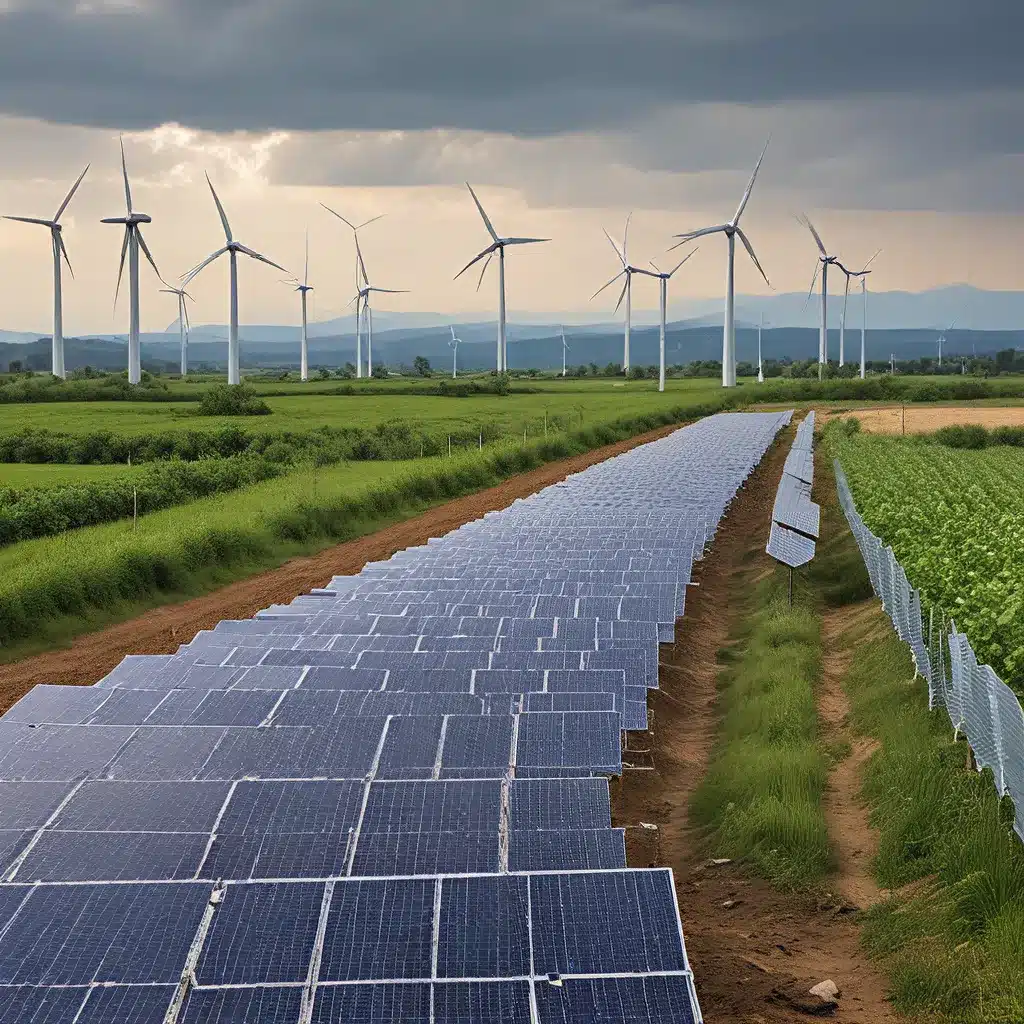
The Surge of the Inflation Reduction Act
As I sit here, sipping on my lukewarm coffee, I can’t help but feel a sense of cautious optimism about the future of renewable energy in the United States. The Inflation Reduction Act (IRA), passed in August 2022, has been hailed as the single biggest climate policy in history, pouring a massive $370 billion into tax credits and incentives to accelerate America’s clean energy transition.
But the road ahead is not without its challenges. The IRA has faced some initial obstacles, with a slower-than-expected domestic rollout. Much of this delay can be attributed to the breakneck speed at which the policy was put together, leaving little time for policymakers and the industry to fully understand how it would be implemented.
Nevertheless, I believe the IRA’s true impact will start to be felt in 2024, creating a veritable boon for the renewable energy industry. The legislation will not only incentivize homeowners to adopt solar or energy-efficient home improvements, but it will also support the economics of renewable power generation, energy storage, manufacturing, and a host of other clean tech sectors for the next decade.
Navigating the Complexities
As the government adjusts to this new policy, it’s been fascinating to see how the industry is navigating its complexities. The backlogged Treasury, tasked with decodifying the legislative-driven new law, has been working hard to ensure the IRA’s provisions are properly rolled out.
One of the key challenges the industry is facing is the potential supply chain constraints for critical components like solar modules, batteries, and other renewable equipment. While the IRA incentivizes the domestic manufacturing needed to meet ambitious clean energy targets, industry experts believe the US will likely be undersupplied with these components through at least 2026.
This raises an intriguing question: Will the industry have access to enough solar modules, batteries, and other components from other countries to support the IRA and reach net-zero targets? It’s a complex issue that will require careful navigation and strategic partnerships.
The Looming Political Tug-of-War
Adding to the uncertainty is the pivotal US presidential election scheduled for November 2024. The outcome of this election could have far-reaching implications for the current and future renewable energy policy in the United States.
While a repeal of the IRA is not entirely out of the question, it would face significant obstacles, such as the concentration of investments made in Republican states after the law’s passing, the need for a majority of votes from both houses of Congress, and the filibuster-proof 60-person super majority in the Senate.
However, a new administration, particularly one led by former President Donald Trump, could potentially undermine the IRA’s effectiveness through other means. They could, for example, slow down the regulatory approval process for transmission lines, prioritize fossil fuels over renewable projects, or influence the distribution of funds and the way the rules are set.
Adapting to a Changing Grid
As the renewable energy landscape continues to evolve, one thing is clear: the US energy grid will see rapid expansion, with more installations reaching remote areas of the country. This presents a unique challenge for the industry – how to provide interconnection and approve new projects in these far-flung locations.
Here’s where I think batteries and non-wire alternatives could play a crucial role. These innovative solutions, which improve existing transmission lines by discharging batteries at both ends, have the potential to help store energy during periods of low supply and sell it back to the grid during times of high demand.
Imagine a future where small homeowners with batteries can participate in the broader electric market, which has historically been reserved for only a few large companies. This could create a new stream of revenue for these individuals, allowing them to contribute to the grid’s resilience and the overall clean energy transition.
The Bright Future Ahead
While the current period of rapid transition may bring its fair share of interconnection and permitting approval delays, short-term interest rate hikes, and a new administration less friendly to the industry, the long-term prospects for renewable energy are promising.
The IRA is here to stay, and even a less-than-supportive administration will find it challenging to undo the legislation’s impact. This, coupled with the accelerated expansion of the US energy grid and the innovative solutions emerging to address interconnection challenges, suggests that the future of renewable energy in America is bright.
As I take the last sip of my coffee, I can’t help but feel a surge of optimism. The renewable energy industry is facing a pivotal moment, and with the right policies, partnerships, and innovative thinking, I believe we can overcome the challenges and unlock a sustainable, clean energy future for this great nation.
Ultimately, the renewable energy landscape is in a state of flux, with policy reforms, supply chain dynamics, and political headwinds all shaping its trajectory. But if we remain adaptable, forward-thinking, and committed to the cause, I’m confident that we can harness the power of renewable energy to build a brighter tomorrow.
So, let’s roll up our sleeves and get to work, my friends. The future of our planet depends on it.

